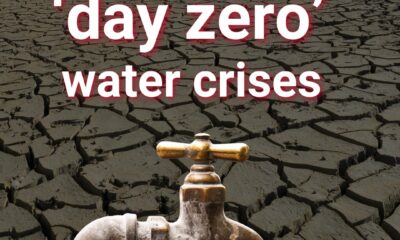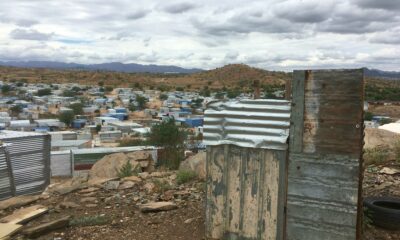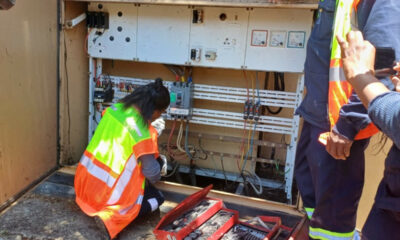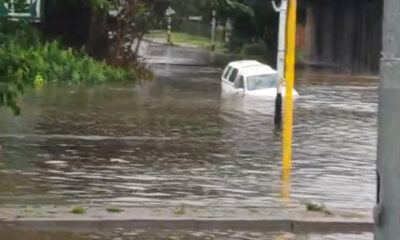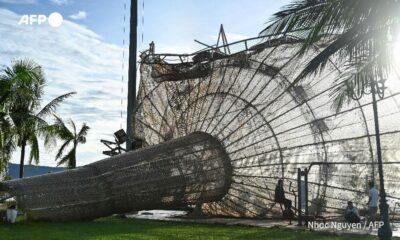Best of Johannesburg
How Weather Patterns Are Changing Gauteng’s Water Supply in 2025

Water in Gauteng is becoming scarcer, and many Joburg residents are feeling the squeeze. This isn’t just about dry taps – it’s a complex challenge rooted in shifting weather patterns, rising temperatures, and increasing demand. Understanding what’s happening to our water supply and how we can adapt is crucial for every local.
Also read: How to Stay Safe and Prepared During Load Shedding in Joburg
The Reality Behind Gauteng’s Water Stress
The main source of water for Gauteng is the Vaal Dam, supplemented by other reservoirs. But these water bodies are under increasing pressure:
-
Hotter weather causes more evaporation. Dry months, especially from September to October, mean more water is lost to the air before it can be used. Climate trends show this will only intensify.
-
Rainfall is less predictable and often insufficient. Climate change has led to irregular rains and prolonged dry spells, making it harder to refill dams and reservoirs consistently.
-
Population growth boosts demand. With Gauteng’s urban areas expanding rapidly, the demand for water keeps climbing – stretching supplies thin.
-
Ageing infrastructure worsens losses. Leaks and worn-out pipelines mean significant water wastage even before it reaches homes.
“The system is under real strain, and we must rethink how we use water – otherwise shortages will only get worse,” says a Johannesburg Water official.
What Joburg Residents Are Experiencing in 2025
Water restrictions and scheduled outages have become part of daily life:
-
Water restrictions limit consumption. Authorities set limits to ensure fair distribution during dry periods. This can include reduced pressure or temporary cuts.
-
Water shedding manages supply risks. Similar to electricity load shedding, water shedding involves planned supply interruptions in certain areas to prevent system failure.
-
Water quality requires vigilance. Higher temperatures encourage algae and contaminants, so residents need to watch for official water quality alerts.

Image 1: umesh negi (Pexels)
What You Can Do Right Now to Help
Every household can play a part in easing the water crisis:
-
Fix dripping taps and leaks quickly – small leaks waste a lot over time.
-
Use water-efficient appliances and fixtures.
-
Collect rainwater for gardening or cleaning.
-
Follow all water restrictions without exception.
-
Prepare for outages by storing clean water safely.
How Gauteng Is Working to Secure Water for the Future
Local water authorities and government bodies are actively tackling the problem through:
-
Infrastructure upgrades to fix leaks and expand storage.
-
Promoting smarter urban planning and demand management.
-
Exploring alternative water sources like groundwater and recycling.
-
Supporting climate change action to reduce future risks.
Why This Matters to Every Joburger
Water is life, and in Gauteng’s growing cityscape, it’s also a shared responsibility. As temperatures rise and rains shift, the challenge to keep our taps running grows with it. But with informed residents, better infrastructure, and smart policies, we can protect our water supply for ourselves and the next generation.
A local resident recently summed it up well on social media:
“It’s tough when the water’s off, but knowing why it happens helps us prepare. Everyone needs to save water – it’s our city’s future.”
Key Takeaways
-
Hotter, drier weather leads to increased evaporation and less reliable rainfall.
-
Population growth puts more pressure on a limited water supply.
-
Water restrictions and shedding help manage scarce resources.
-
Fix leaks, conserve water, and prepare for outages.
-
Authorities are upgrading infrastructure and exploring new water sources.
Also read: Gauteng Water Supply Cycle Explained: Joburg’s Water Security in 2025
Follow Joburg ETC on Facebook, Twitter , TikTok and Instagram
For more News in Johannesburg, visit joburgetc.com
Source: Wits University
Featured Image: Water and Climate Coalition

